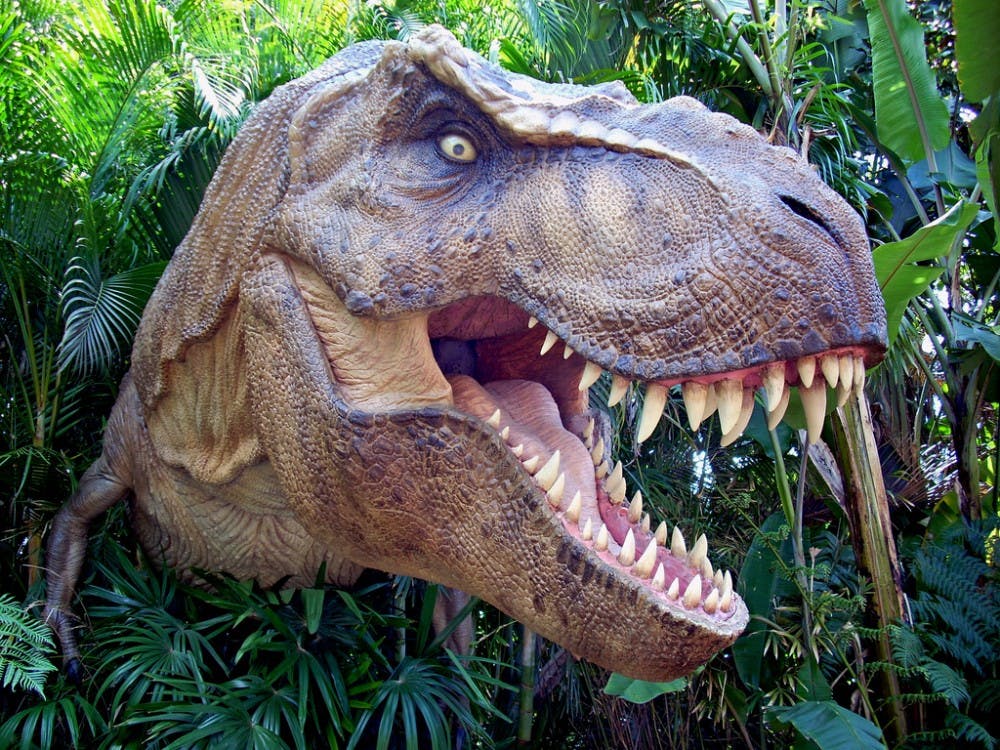The age of dinosaurs drew to a close some 66 million years ago when a large asteroid struck the Yucatán Peninsula. The asteroid was about nine kilometers in diameter and released large amounts of stratospheric soot and sulfate aerosols when it collided with the hydrocarbon-rich sedimentary rocks on Earth.
The release of these substances resulted in massive global cooling and drought. Ultimately it was this after-effect that led to the extinction of not only the dinosaurs, but also over 75 percent of all species inhabiting the Earth at that time.
However, the extinction was also the beginning of the evolution of mammals and eventually humans on Earth. Had the dinosaurs not fallen extinct, mammals may never have evolved.
In a new study published in the journal Scientific Reports, author Kunio Kaiho of Tohoku University in Japan, revealed that dinosaurs might have continued to live, had the asteroid struck Earth elsewhere.
The study focuses primarily on the differing concentrations of sulfate and hydrocarbons in sediment across the Earth. In fact, according to the study, only 13 percent of Earth’s surface contained concentrations of the necessary sulfates and hydrocarbons high enough to result in a global extinction.
When the asteroid collided with the Yucatán Peninsula, in the spot now known as the Chicxulub crater, it spewed almost 60 trillion gallons of soot high into the atmosphere. The soot served to block much of the sun’s light, ultimately cooling the Earth’s surface by almost 18 degrees Fahrenheit.
Had the asteroid collided with a different spot on Earth — for example, the middle of an ocean — there may not have been enough available sulfates and fossil fuels to launch enough soot into the sky to achieve the same results.
In the study, Kaiho not only reveals this finding, but also analyzes which areas on Earth would have been sufficient to result in extinction when the asteroid hit. Co-author Naga Oshima used Kaiho’s analysis of sedimentary samples along with high level software to build a computational model that simulates what collisions with different locations on Earth would have looked like.
The study ultimately concluded that 87 percent of the Earth would not have supplied enough sulfate or hydrocarbons to result in the drastic temperature drop and drought. The asteroid could only have accomplished such an intense global impact by colliding with algae rich coastal regions such as present day Siberia or the Middle East.
The paper and its massive conclusions received criticism from many outside scientists. While most agree that the results of a collision is indeed location dependent, many are hesitant to agree with the specific geographical conclusions the study reached.
For example, marine geophysicist from the University of Texas at Austin, Sean P.S. Gullick explained that he questions many of the assumptions of the study including where the soot they analyzed for sulfate and hydrocarbon concentrations came from, as well as exactly how the impact affected the climate. He did however agree that the collision would have been location dependent.
“The idea that location, location, location is important for an impact, I think is absolutely correct.” Gullick said, according to The New York Times.
Almost all scientists agree that soot covered the Earth shortly after the asteroid collision. Where there is disagreement is on just how that soot got there.
Gullick in particular believes the asteroid was not the immediate source of the atmospheric soot but rather that flaming debris released from its impact ignited large wildfires across the Earth and that these wildfires resulted in the blockage of the sun’s light.
The story surrounding the extinction of the dinosaurs continues to be one reliant on scientific assumption. Perhaps one day scientists will be able to say with certainty exactly which events took place some 66 million years ago, but for now scientists must rely on assumptions and simulation technology to estimate what occurred.





